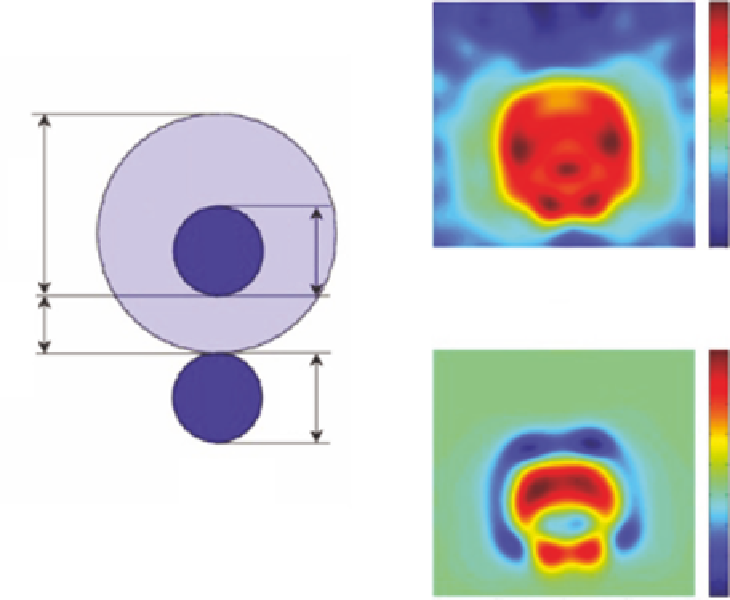Image Processing Reference
In-Depth Information
(b)
100
9
8
7
6
5
4
3
2
1
80
60
40
20
0
-20
-40
-60
-80
-100
-100
(a)
-50
0
50
100
mm
(c)
100
80
60
40
20
0
-20
-40
-60
-80
-100
-100
2.2
2.1
2
1.9
1.8
1.7
1.6
1.5
-50
0
50
100
mm
Figure 9.20
FoamTwinExt at 6 GHz: (a) Target, (b) Born reconstruction, and (c) cepstral reconstruction.
is, it contains a large cylinder with relative permittivity of ε
r
≈ 1.45, a smaller
inner cylinder with relative permittivity of ε
r
≈ 3.0 and an outer small cylin-
der with relative permittivity of ε
r
≈ 3.0. The Born reconstruction and cepstral
reconstruction for FoamTwinExt are shown in Figure 9.20.
The FoamTwinExt is a complex strong scatterer and a Born reconstruction
is not able to retrieve either correct dimensions or the permittivity distribu-
tion of object (see Figure 9.20b). Considering the complexity of the object, the
cepstral reconstruction has made a reasonable attempt in identifying all three
cylinders or permittivity contrast levels as evident in Figure 9.20c. It is pos-
sible that the degradation in image quality is due to the lack of measured data,
given the extent of multiple scattering that results from the high scattering
strength of the original object. The amount of data provided for FoamTwinExt
is not sufficient to recover a good image estimate using these techniques. The
scattering data for FoamDielInt, which has a simple circular geometry, was
collected using 8 incident illuminations, whereas the FoamTwinExt, which
has a complex geometry, was collected using only 18 incident illuminations.
This is strong evidence to suggest that, as the geometrical and optical com-
plexity of the scattering object increase, one needs higher sampling density
of the scattered field or increased degrees of freedom to obtain a meaningful
reconstruction of the object.

Search WWH ::

Custom Search